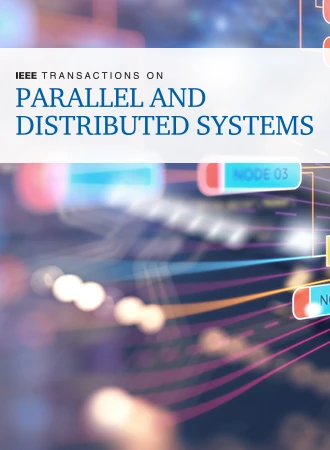在多核上优化多网格预处理共轭梯度法
IF 5.6
2区 计算机科学
Q1 COMPUTER SCIENCE, THEORY & METHODS
IEEE Transactions on Parallel and Distributed Systems
Pub Date : 2024-03-05
DOI:10.1109/TPDS.2024.3372473
引用次数: 0
摘要
多网格预条件共轭梯度(MGPCG)常用于高性能计算(HPC)工作负载。然而,由于 MGPCG 的大多数计算内核都有内存限制,算术强度较低,且并行进程之间的通信模式并不复杂,因此优化 MGPCG 的难度可想而知。本文介绍了通过首先合并多网格(MG)内核来提高 MGPCG 的数据局部性和减少通信开销的新技术。然后,我们开发了一种异步相邻通信算法,以减少并行进程间的数据通信。我们将这种方法应用于高性能共轭梯度(HPCG)基准,并将其与现实生活中的代数多网格软件包集成,从而展示了这种方法的优势。我们在三个 ARMv8 和一个英特尔至强系统上测试了由此产生的软件实现。实验结果表明,在各种工作负载和平台上,我们的方法比工程师和供应商调整的 HPCG 实现速度提高了 1.62 倍至 2.54 倍。本文章由计算机程序翻译,如有差异,请以英文原文为准。
Optimizing Multi-Grid Preconditioned Conjugate Gradient Method on Multi-Cores
Multigrid preconditioned conjugate gradient (MGPCG) is commonly used in high-performance computing (HPC) workloads. However, MGPCG is notoriously challenging to optimize since most of its computation kernels are memory-bounded with low arithmetic intensity and non-trivial communication patterns among parallel processes. This article presents new techniques to improve the data locality and reduce the communication overhead of MGPCG by first merging the kernels of multigrid (MG). We then develop an asynchronous neighboring communication algorithm to reduce the data communications across parallel processes. We demonstrated the benefits of our approach by applying it to the high-performance conjugate gradient (HPCG) benchmark and integrating it with a real-life algebraic multigrid package. We test the resulting software implementations on three ARMv8 and one Intel Xeon system. Experimental results show that our approach leads to a 1.62x-2.54x speedup over the engineer- and vendor-tuned HPCG implementations across various workloads and platforms.
求助全文
通过发布文献求助,成功后即可免费获取论文全文。
去求助
来源期刊

IEEE Transactions on Parallel and Distributed Systems
工程技术-工程:电子与电气
CiteScore
11.00
自引率
9.40%
发文量
281
审稿时长
5.6 months
期刊介绍:
IEEE Transactions on Parallel and Distributed Systems (TPDS) is published monthly. It publishes a range of papers, comments on previously published papers, and survey articles that deal with the parallel and distributed systems research areas of current importance to our readers. Particular areas of interest include, but are not limited to:
a) Parallel and distributed algorithms, focusing on topics such as: models of computation; numerical, combinatorial, and data-intensive parallel algorithms, scalability of algorithms and data structures for parallel and distributed systems, communication and synchronization protocols, network algorithms, scheduling, and load balancing.
b) Applications of parallel and distributed computing, including computational and data-enabled science and engineering, big data applications, parallel crowd sourcing, large-scale social network analysis, management of big data, cloud and grid computing, scientific and biomedical applications, mobile computing, and cyber-physical systems.
c) Parallel and distributed architectures, including architectures for instruction-level and thread-level parallelism; design, analysis, implementation, fault resilience and performance measurements of multiple-processor systems; multicore processors, heterogeneous many-core systems; petascale and exascale systems designs; novel big data architectures; special purpose architectures, including graphics processors, signal processors, network processors, media accelerators, and other special purpose processors and accelerators; impact of technology on architecture; network and interconnect architectures; parallel I/O and storage systems; architecture of the memory hierarchy; power-efficient and green computing architectures; dependable architectures; and performance modeling and evaluation.
d) Parallel and distributed software, including parallel and multicore programming languages and compilers, runtime systems, operating systems, Internet computing and web services, resource management including green computing, middleware for grids, clouds, and data centers, libraries, performance modeling and evaluation, parallel programming paradigms, and programming environments and tools.
 求助内容:
求助内容: 应助结果提醒方式:
应助结果提醒方式:


